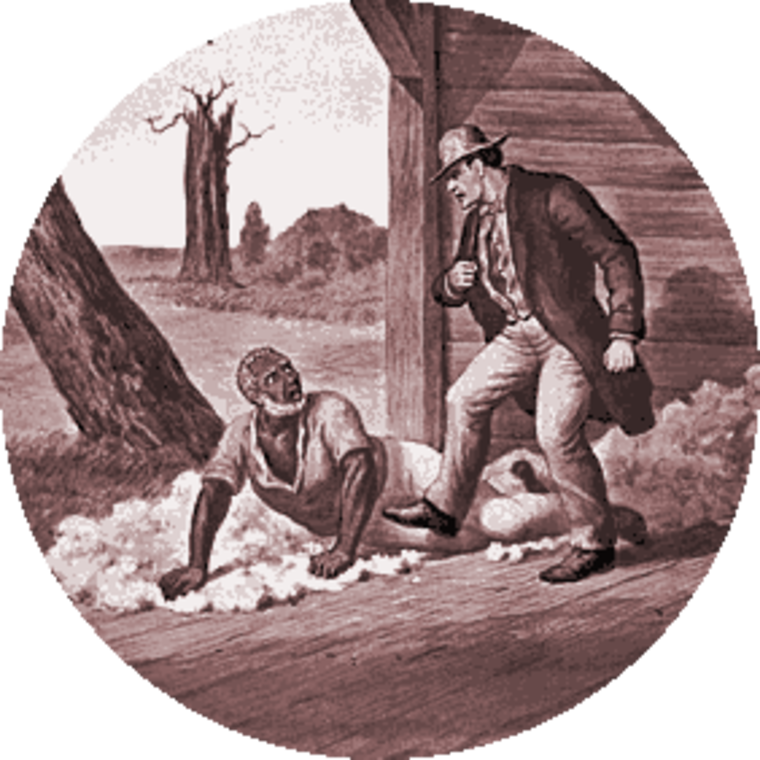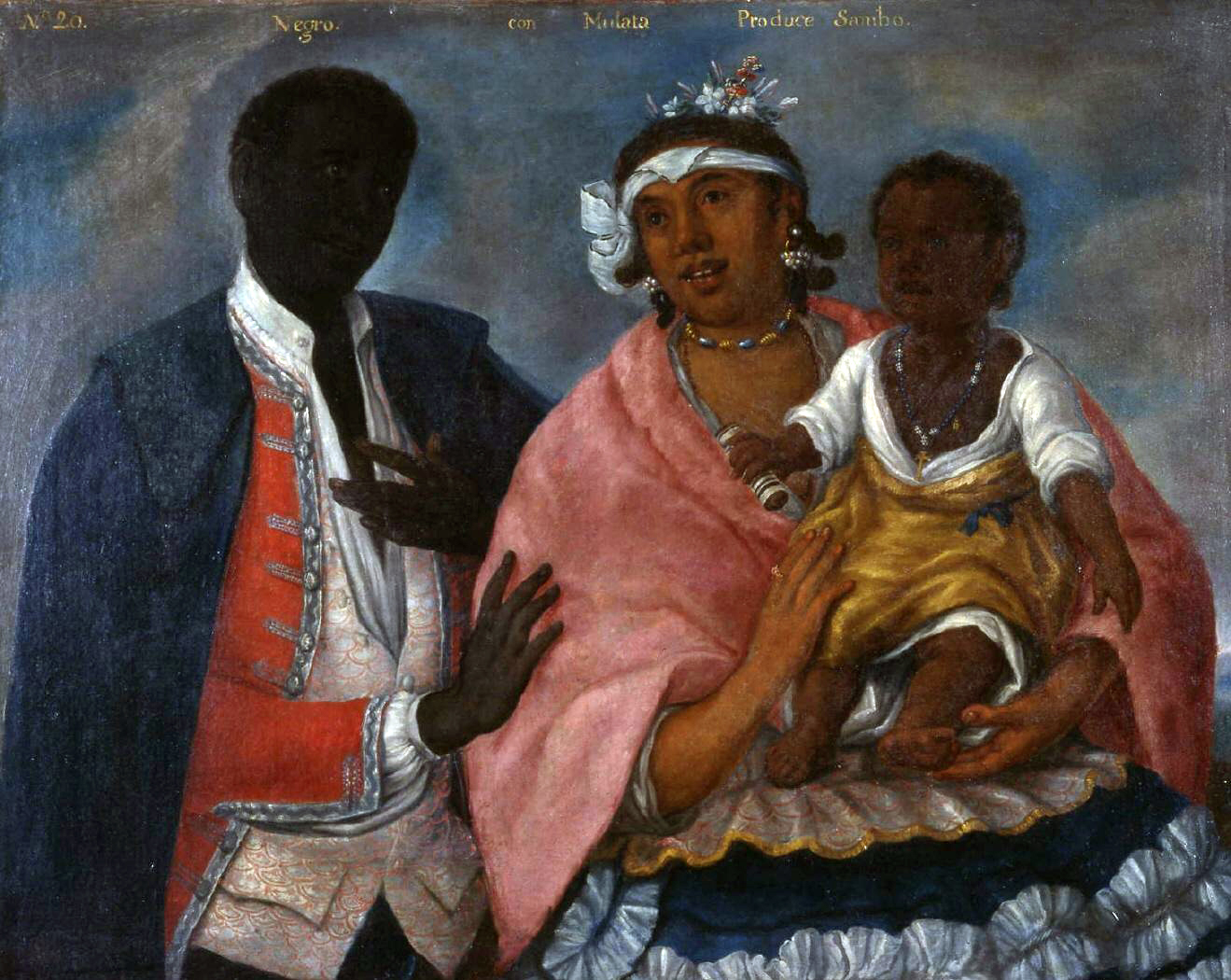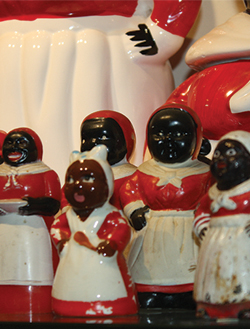|
Ethnic Notions
''Ethnic Notions'' is a 1987 documentary film directed by Marlon Riggs. It examines anti-Black stereotypes that permeated popular culture from the ante-bellum period until the advent of the Civil Rights Movement of the 1960s. Content ''Ethnic Notions'' takes viewers on a disturbing voyage through American history, tracing for the deep-rooted stereotypes which have fueled anti-Black prejudice. Through these images we can begin to understand the evolution of racial consciousness in the United States. ''Ethnic Notions'' exposes and describes common stereotypes (The Tom, The Sambo, The Mammy, The Coon, The Brute, The Pickaninnies, The Minstrels A minstrel was an entertainer, initially in Middle Ages, medieval Europe. It originally described any type of entertainer such as a musician, juggler, acrobatics, acrobat, singer or jester, fool; later, from the sixteenth century, it came to ...) from the period surrounding the Civil War and the World Wars. The stereotypes roll acro ... [...More Info...] [...Related Items...] OR: [Wikipedia] [Google] [Baidu] |
Marlon Riggs
Marlon Troy Riggs (February 3, 1957 – April 5, 1994) was a Black gay filmmaker, educator, poet, and activist. He produced, wrote, and directed several documentary films, including ''Ethnic Notions'', '' Tongues Untied'', ''Color Adjustment'', and '' Black Is...Black Ain't.'' His films examine past and present representations of race and sexuality in the United States. The Marlon Riggs Collection is housed at Stanford University Libraries. Early life Riggs was born in Fort Worth, Texas, on February 3, 1957. He was a child of civilian employees of the military and spent a great deal of his childhood traveling. He lived in Texas and Georgia before moving to West Germany at the age of 11 with his family. He was the son of Jean (mother) and Alvin Riggs (father) and also had a sibling named Sascha. Later in his life, Riggs recalled the ostracism and name-calling that he experienced at Hephzibah Junior High School in Hephzibah, Georgia. He stated that Black and white students alike ... [...More Info...] [...Related Items...] OR: [Wikipedia] [Google] [Baidu] |
Esther Rolle
Esther Elizabeth Rolle (November 8, 1920 – November 17, 1998) was an American actress. She is best known for her role as Florida Evans, on the CBS television sitcom '' Maude,'' for two seasons (1972–1974), and its spin-off series '' Good Times'', for five seasons (1974–77, 1978–79), for which Rolle was nominated for a Golden Globe Award for Best Actress - Television Series Musical or Comedy in 1976. In 1979, Rolle won the Emmy Award for Outstanding Supporting Actress in a Limited Series or Special for the television film '' Summer of My German Soldier''. Early life Esther Rolle was born in Pompano Beach, Florida to Bahamian immigrants Jonathan Rolle (1883–1953), a farmer, and Elizabeth Iris Rolle (née Dames; 1887–1981). Her parents were both born and raised in Nassau, New Providence, The Bahamas and moved to Florida some time after their marriage. She was the tenth of 18 children (children who included siblings and fellow actresses Estelle Evans and Rosan ... [...More Info...] [...Related Items...] OR: [Wikipedia] [Google] [Baidu] |
California Newsreel
California Newsreel, was founded in 1968 as the San Francisco branch of the national film making collective Newsreel. It is an American non-profit, social justice film distribution and production company still based in San Francisco, California. Their educational media resources include both documentary and feature films, with a focus on the advancement of racial justice and diversity, and the study of African American life and history, as well as African culture and politics. In 2006, Newsreel launched a new thematic focus for their work: Globalization, with an emphasis on the global economy and the international division of labor. Several of California Newsreel's films have been broadcast on PBS. California Newsreel has produced a small number of films related to racial and economic justice, including ''Race: The Power of an Illusion'' (2003), and ''UNNATURAL CAUSES: Is Inequality Making Us Sick?'' (2008) a new video series ''The Raising of America: Early Childhood and the Futu ... [...More Info...] [...Related Items...] OR: [Wikipedia] [Google] [Baidu] |
Documentary Film
A documentary film or documentary is a non-fictional film, motion-picture intended to "document reality, primarily for the purposes of instruction, education or maintaining a Recorded history, historical record". Bill Nichols (film critic), Bill Nichols has characterized the documentary in terms of "a filmmaking practice, a cinematic tradition, and mode of audience reception [that remains] a practice without clear boundaries". Early documentary films, originally called "actuality films", lasted one minute or less. Over time, documentaries have evolved to become longer in length, and to include more categories. Some examples are Educational film, educational, observational and docufiction. Documentaries are very Informational listening, informative, and are often used within schools as a resource to teach various principles. Documentary filmmakers have a responsibility to be truthful to their vision of the world without intentionally misrepresenting a topic. Social media platfor ... [...More Info...] [...Related Items...] OR: [Wikipedia] [Google] [Baidu] |
Uncle Tom
Uncle Tom is the title character of Harriet Beecher Stowe's 1852 novel, ''Uncle Tom's Cabin''. The character was seen by many readers as a ground-breaking humanistic portrayal of a slave, one who uses nonresistance and gives his life to protect others who have escaped from slavery. However, the character also came to be seen, especially based on his portrayal in pro-compassion dramatizations, as inexplicably kind to white slaveholders. This led to the use of ''Uncle Tom'' – sometimes shortened to just ''a Tom'' – as a derogatory epithet for an exceedingly subservient person or house negro, particularly one aware of their own lower-class racial status. Original characterization and critical evaluations At the time of the novel's initial publication in 1851, Uncle Tom was a rejection of the existing stereotypes of minstrel shows; Stowe's melodramatic story humanized the suffering of slavery for white audiences by portraying Tom as a young, strong Jesus-like figure who is ulti ... [...More Info...] [...Related Items...] OR: [Wikipedia] [Google] [Baidu] |
Sambo (racial Term)
Sambo is a derogatory label for a person of African descent in the English language. Historically, it is a name in American English derived from a Spanish term for a person of African and Native American ancestry. After the Civil War, during the Jim Crow era and beyond, the term was used in conversation, print advertising and household items as a pejorative descriptor for Black people. The term is now considered offensive in American and British English. Etymology ''Sambo'' came into the English language from , the Spanish word in Latin America for a person of South American negro, mixed European, and native descent. This in turn may have come from one of three African language sources. ''Webster's Third International Dictionary'' holds that it may have come from the Kongo word ('monkey')—the ''z'' of Latin-American Spanish being pronounced here like the English ''s''. The Royal Spanish Academy gives the origin from a Latin word, possibly the adjective or another modern ... [...More Info...] [...Related Items...] OR: [Wikipedia] [Google] [Baidu] |
Mammy Archetype
A mammy is a U.S. historical stereotype depicting black women who work in a white family and nurse the family's children. The fictionalized mammy character is often visualized as a larger-sized, dark-skinned woman with a motherly personality. The origin of the mammy figure stereotype is rooted in the history of slavery in the United States. Black slave women were tasked with domestic and childcare work in white American slaveholding households. The mammy stereotype was inspired by these domestic workers. The mammy caricature was used to create a narrative of black women being happy within slavery or within a role of servitude. The mammy stereotype associates black women with domestic roles and it has been argued it, combined with segregation and discrimination, limited job opportunities for black women during the Jim Crow era, approximately 1877 to 1966. History The mammy caricature was first seen in the 1830s in antebellum proslavery literature as a way to oppose the descri ... [...More Info...] [...Related Items...] OR: [Wikipedia] [Google] [Baidu] |
Racial Slur
The following is a list of ethnic slurs or ethnophaulisms or ethnic epithets that are, or have been, used as insinuations or allegations about members of a given ethnicity or racial group or to refer to them in a derogatory, pejorative, or otherwise insulting manner. Some of the terms listed below (such as "gringo", "yank", etc.) can be used in casual speech without any intention of causing offense. The connotation of a term and prevalence of its use as a pejorative or neutral descriptor varies over time and by geography. For the purposes of this list, an ''ethnic slur'' is a term designed to insult others on the basis of race, ethnicity, or nationality. Each term is listed followed by its country or region of usage, a definition, and a reference to that term. Ethnic slurs may also be produced as a racial epithet by combining a general-purpose insult with the name of ethnicity, such as "dirty Jew", "Russian pig", etc. Other common insulting modifiers include "dog", "filthy", ... [...More Info...] [...Related Items...] OR: [Wikipedia] [Google] [Baidu] |
Pickaninnies
Pickaninny (also picaninny, piccaninny or pickinninie) is a pidgin word for a small child, possibly derived from the Portuguese ('boy, child, very small, tiny'). In North America, ''pickaninny'' is a racial slur for African American children. It can also refer to a derogatory caricature of a dark-skinned child of African descent. Origins and usage The origins of the word ''pickaninny'' are disputed; it may derive from the Portuguese term for a small child, . ''Pickaninny'' (along with its alternative spellings ''picaninny'' and ''piccaninny'') was used in the seventeenth century to mean any child of African descent. It aquired a pejorative connotation by the nineteenth century and was used for black children in the United States and Britain, as well as aboriginal children of the Americas, Australia, and New Zealand. Pidgin languages The term ''piccanin'', derived from the Portuguese , has along with several variants become widely used in pidgin languages, meaning 'sma ... [...More Info...] [...Related Items...] OR: [Wikipedia] [Google] [Baidu] |
Minstrels
A minstrel was an entertainer, initially in medieval Europe. It originally described any type of entertainer such as a musician, juggler, acrobat, singer or fool; later, from the sixteenth century, it came to mean a specialist entertainer who sang songs and played musical instruments. Description Minstrels performed songs which told stories of distant places or of existing or imaginary historical events. Although minstrels created their own tales, often they would memorize and embellish the works of others. Frequently they were retained by royalty and high society. As the courts became more sophisticated, minstrels were eventually replaced at court by the troubadours, and many became wandering minstrels, performing in the streets; a decline in their popularity began in the late 15th century. Minstrels fed into later traditions of travelling entertainers, which continued to be moderately strong into the early 20th century, and which has some continuity in the form of today's bu ... [...More Info...] [...Related Items...] OR: [Wikipedia] [Google] [Baidu] |





